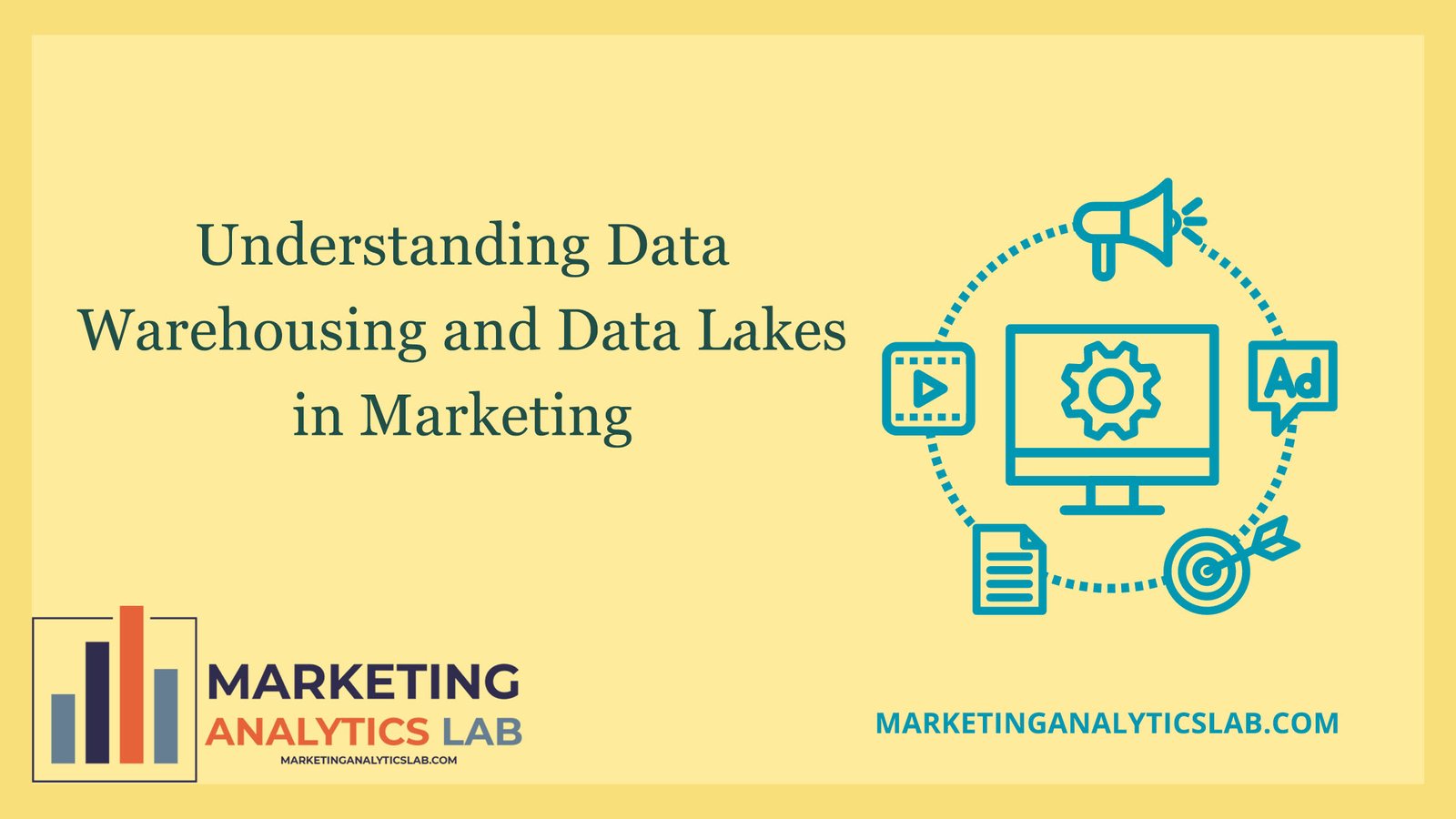In the realm of marketing analytics, effectively managing and analyzing vast amounts of data is crucial for deriving actionable insights. Two key concepts that play a significant role in handling marketing data are Data Warehousing and Data Lakes. While they both serve the purpose of storing and organizing data, they do so in distinct ways, each with its own set of benefits and use cases. This article explores the fundamentals of data warehousing and data lakes, their differences, and how they apply to marketing analytics.
1. What is Data Warehousing?
Overview: Data warehousing involves the consolidation of data from multiple sources into a central repository designed for reporting and analysis. It uses structured data models to support complex queries and business intelligence processes.
Key Components:
- Data Warehouse: A large, centralized repository that stores structured data from various operational systems.
- ETL Process (Extract, Transform, Load): A critical process in data warehousing where data is extracted from sources, transformed into a suitable format, and loaded into the data warehouse.
- Schema: The data warehouse typically uses a predefined schema, such as star schema or snowflake schema, to organize and structure the data.
Benefits:
- Consistency: Provides a single version of the truth by integrating data from various sources.
- Performance: Optimized for complex queries and reporting, enabling fast data retrieval and analysis.
- Historical Data: Stores historical data, allowing for trend analysis and long-term reporting.
Applications in Marketing:
- Customer Segmentation: Analyze historical customer data to identify and target specific segments.
- Campaign Performance: Evaluate the performance of marketing campaigns over time.
- Sales Analysis: Generate reports and insights on sales trends and customer behavior.
2. What is a Data Lake?
Overview: A data lake is a centralized repository that stores raw, unstructured, and semi-structured data from various sources. It allows organizations to store vast amounts of data in its native format until it is needed for processing and analysis.
Key Components:
- Data Lake: A scalable storage system that can accommodate a wide variety of data types, including structured, semi-structured, and unstructured data.
- Data Ingestion: The process of collecting and storing data in the data lake from diverse sources, such as social media, web logs, and IoT devices.
- Data Processing: Tools and technologies that allow for the transformation and analysis of raw data, often using big data technologies and frameworks.
Benefits:
- Flexibility: Accommodates diverse data types and formats, allowing for the storage of data without a predefined schema.
- Scalability: Can handle large volumes of data and scale as data grows.
- Advanced Analytics: Supports big data analytics, machine learning, and real-time processing.
Applications in Marketing:
- Customer Insights: Integrate and analyze data from various sources, such as social media interactions, web browsing behavior, and customer feedback.
- Personalization: Use advanced analytics and machine learning to create personalized marketing experiences and recommendations.
- Trend Analysis: Identify emerging trends and patterns by analyzing large volumes of raw data.
3. Data Warehousing vs. Data Lakes
Structure and Schema:
- Data Warehousing: Uses a structured schema with predefined data models, making it suitable for structured data and complex queries.
- Data Lakes: Stores raw, unstructured data without a predefined schema, allowing for flexibility in data storage and analysis.
Data Processing:
- Data Warehousing: Data is processed and transformed before loading into the data warehouse. This ensures data quality and consistency but may delay access to the latest data.
- Data Lakes: Raw data is stored as-is, and processing occurs as needed. This allows for real-time data access and analysis but may require additional processing and cleaning.
Cost and Scalability:
- Data Warehousing: Typically requires significant upfront investment in infrastructure and can be expensive to scale.
- Data Lakes: Often built on cloud-based storage solutions, providing cost-effective and scalable options for handling large volumes of data.
Use Cases:
- Data Warehousing: Ideal for traditional business intelligence, reporting, and structured data analysis.
- Data Lakes: Suitable for big data analytics, real-time processing, and storing diverse data types.
4. Best Practices for Marketing Data Management
a. Define Clear Objectives:
- Determine the goals and objectives for data storage and analysis to choose the appropriate solution.
b. Integrate Data Sources:
- Ensure data from various marketing channels and sources is integrated effectively for comprehensive analysis.
c. Implement Data Governance:
- Establish data governance practices to maintain data quality, security, and compliance.
d. Use Appropriate Tools and Technologies:
- Leverage tools and technologies that align with your data storage and analysis needs, such as data warehousing platforms or big data frameworks.
e. Focus on Data Security and Privacy:
- Protect sensitive customer data by implementing robust security measures and complying with privacy regulations.
5. Conclusion: Leveraging Data Warehousing and Data Lakes in Marketing
Data warehousing and data lakes are essential components of a modern marketing analytics strategy. Data warehousing provides structured, high-performance reporting and analysis capabilities, while data lakes offer flexibility and scalability for handling diverse and large-scale data sets.
By understanding the strengths and applications of each approach, businesses can effectively manage and analyze marketing data, gaining valuable insights that drive informed decision-making and enhance overall marketing performance. Whether leveraging the structured environment of data warehousing or the versatility of data lakes, marketers can harness the power of their data to achieve greater success and competitive advantage.

